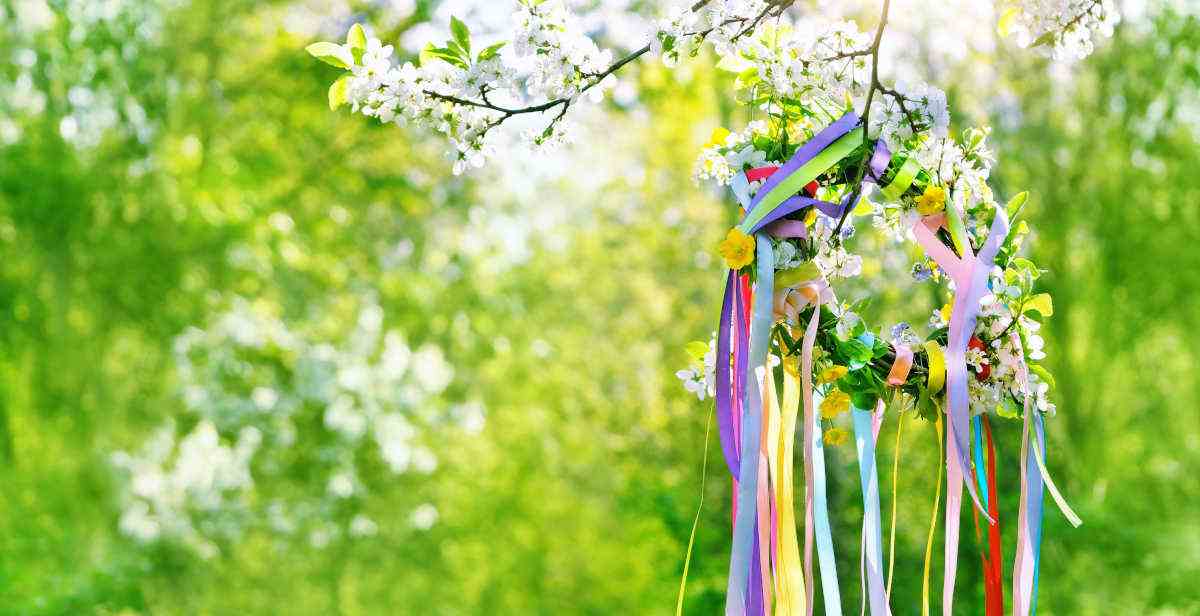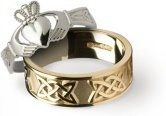Blog Categories
Blog CategoriesBealtaine - The Month of May - Irish Fairytales and Folklore

Here comes the summer!
Light, growth, fertility - what’s not to like about the beginning of the summer season?
Bealtaine, meaning ‘bright fire’ is the Irish word for the start of summer and is traditionally celebrated on May 1st - May Day. The turning of the year from the darkness of winter to the light of summer was marked with fires, flowers and fertility.
The Celtic people believed that at times of dusk and dawn there was a ‘thin’ window when the spirits were most active and magical and celebrations began just as the light waned the night before May Day.
In the past, bonfires, feasting and rituals marked this happy time and the word Bealtaine derives from the Celtic god "Bel" (meaning "bright" or "shining") and the Irish word "teine" (meaning "fire"), hence "bright fire".
Falling roughly halfway between the equinox of spring and the summer solstice, Bealtaine was a massively important time in the Celtic calendar. While many of the traditions have faded, some are now coming back in various forms across Ireland and Scotland and the Isle of Man.
Bonfires were a central part of the Bealtaine celebrations, emphasising the warmth and the power of the sun. People would gather around the fire to dance, sing and feast.
Bealtaine is often associated with the Hill of Uisneach (Cnoc Uisneach) in County Westmeath. There are extensive layers of charcoal and evidence of huge fires on the hill according to archaeologists. On a clear day it is said that as far as 20 counties can be seen from the top.
The lighting of the Bealtaine Fire on the Hill of Uisneach is a tradition that carries on to this day.
Feasting, dancing and rituals to celebrate the summer ahead and good fortune were also a big part of the celebrations. May flowers were picked on the evening before May Day. This was often done by children who went garlanding for flowers. These were sometimes put together to make posies or crowns which were then worn for the celebrations.
Cattle and livestock were driven around the bonfires along with dancing, chanting and singing which was believed to prevent harm and ensure good fortune.
Leaving gifts for fairies was another big tradition. Bealtaine is an occasion when the ‘other world’ is said to be the most active and it was a time to leave a gift of milk, honey or butter or whiskey out.
In some parts of Ireland the tradition of the ‘May Bush’ continues with bushes decorated with pieces of fabric or wildflowers. The bush was often of hawthorn and the decorations could include anything from ribbons to cloth streamers to tinsel.
“Long life, a pretty wife and a candle for the May Bush”, was recited by Dublin children as they went around looking for contributions to their May Day festivities and they would then be given money or sweets.
Yellow flowers were a big theme and are still really popular at this time of year but inside the home in vases unlike times past. Primroses, marigolds, buttercups and furze were strewn around the outside of homes and on doorsteps and windowsills. It was said that they would bring luck to the house and offer protection. It was believed that the ‘bad fairies; would not enter a home because of the sweet smelling flowers.
Mayflower water taken from the well on May Day was said to offer very special protection and cures. This water and May morning dew was believed to be good for the complexion and people washed their faces in it and let them dry in the sun.
And - as always - in true Irish style the weather always comes into the traditions and conversations. ‘Ne’re cast a clout ‘til May is out’ is still often said and it means that even though the beginning of summer has been heralded that the weather in Ireland still can’t be something to depend on!
